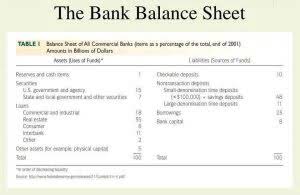
Because the parent company and its subsidiaries form one economic entity, investors, regulators, and customers find consolidated financial statements helpful in gauging the overall position of the entire entity. Consolidated financial statements are of paramount importance in the world of finance and accounting. They offer a comprehensive and accurate view of the financial performance and position of companies under common control. Consolidated financial statements integrate the financial data of a parent company and its subsidiary entities into a unified set of reports. The process commences by collecting individual financial statements from each entity, including income statements, balance sheets, and cash flow statements, adhering to standard accounting principles. These statements play a vital role in legal compliance, allowing companies to meet regulatory requirements in many jurisdictions and provide an accurate representation of the group’s financial health.

Consolidated Financial Statement

Prophix One is an all-in-one Financial Performance Platform for every process that goes through the Office of the CFO. It puts all your financial data at your fingertips so you can create consolidated financial statements with ease. Companies that don’t have to produce consolidated financial statements may still choose to do so. Usually, this is for certain tax advantages or to provide a better picture of the entity’s overall financial position to investors. A consolidated financial statement reports on the entirety of a company with detailed information about each subsidiary.

Step 1: Identify the entities you need to consolidate
Consolidated financial statements, in simple terms, are the financial statements of a business having numerous divisions or subsidiaries. Private company usually prepare non-consoliate financial statement due to its simple structure. The private company has less requirement in preparing the financial statement while the public company needs to comply with many regulations such as IFRS, SEC, and other local guidelines. ABC must record $400 million in earnings on its income statement since ABC has a 40% stake and exerts some control over XYZ. Also, ABC needs to record the increase in the value of the initial investment, listed on the balance sheet, by $400 million. As an example, let’s say that Company ABC has a 40% controlling interest in its unconsolidated subsidiary, Business XYZ, which it created as an SPV for a new construction project in a foreign country that will only last for a year.
The Method of Reporting a Minority Interest in Consolidated Financial Statements
Investors can use consolidated profit to assess the financial health of the group as a whole, including the parent company and its subsidiaries. Public companies normally make this decision on a longer-term basis, as changing from filing consolidated to unconsolidated financial statements may raise concerns with investors or cause complications with auditors. In some circumstances, such as a spinoff or new acquisition, the parent company may call for a change in consolidated statements. The tax benefits a business may receive by reporting a consolidated vs an unconsolidated income statement for a tax year generally have an impact on this annual decision.
Losses
- An unconsolidated financial statement would treate each subsidiary separately from an accounting perspective, while a consolidated one accounts for every subsidiary together.
- With Prophix One, you can aggregate data automatically and build consolidated financial statements in less time and with no errors.
- As an Investopedia fact checker since 2020, he has validated over 1,100 articles on a wide range of financial and investment topics.
- The final financial reporting statements remain the same in the balance sheet, income statement, and cash flow statement.
- As a finance professional, you know that financial statements are an essential tool for evaluating the financial health of an organization.
If this relationship is deemed “controlling”, the parent company must prepare consolidated financial statements. Filing consolidated subsidiary financial statements is a long-term financial accounting decision because switching from consolidated to unconsolidated may also law firm chart of accounts cause issues with auditors or investor concerns. However, there are specific cases, such as a spinoff or purchase, where a change in corporate structure may necessitate a change in the consolidated financials.
Which type of financial statement is right for my business?

Also, for a longer length of time, public firms decide whether to produce consolidated or unconsolidated financial statements. A public consolidated vs unconsolidated business may need to submit a change request if it wants to switch from consolidated to unconsolidated. If one company owns part or all of another company, it may be required to prepare a consolidated financial statement. Consolidated financial statements are often used for reporting to investors, government agencies or applying for loans and grants.
STANDARD COST: Definition, Benefits, and Limitations
- Note any information related to the non-controlling interest in the disclosures to the consolidated financial statements.
- They include three key financial statements; income, cash flow, and financial position.
- While there are no definite right or wrong steps, here are some best practices to keep in mind.
- Consolidated financial statements are a crucial tool in financial reporting that combines the financial information of a parent company and its subsidiary entities into a single, unified set of reports.
- A consolidated financial statement combines the information from the subsidiary companies’ individual financials.
- Companies must usually prepare a consolidated income statement to meet compliance laws and standards within their jurisdiction.
- It uses a hybrid consolidated financial statements approach, as seen in its financials.
All revenue generated by the parent company and each subsidiary should be included for the applicable reporting period. If you are trying to compare different companies from the same sector, then standalone statements can be a better idea. If you are analyzing a company that has subsidiaries in a similar line of business, then make sure that you look at consolidated statements. Consolidated Financial Statements are the aggregated financial statement of a group company with multiple segments or subsidiaries.
What Is A Consolidated Financial Statement?
- Ultimately, whether you choose to use standalone or consolidated financial statements will depend on your specific needs and circumstances.
- If a company owns between 20% and 50% of the common shares of another company, it will usually use the equity method.
- However, in most circumstances, private companies can make the decision to produce unconsolidated or consolidated financial statements on an annual basis.
- Public companies usually choose to create consolidated or unconsolidated financial statements for a longer period.
- A parent company produces it to represent its subsidiaries as part of its own financial position.
Overall, unconsolidated financial statements are geared toward analyzing the financial status of individual entities within the group. Before the financial reports are combined to create a consolidated financial statement, a parent business and its subsidiaries will each separately report their finances when compiling a company’s financial statement. A company’s consolidated financial statement is viewed as a barometer of its overall financial health by investors, market authorities, and financial analysts.

What is financial consolidation? A guide for 2025
This level of accuracy and transparency is crucial for investors and creditors when assessing the overall financial stability and prospects of the group. It instills confidence and aids in making informed investment and lending decisions and evaluating the group’s creditworthiness. For internal management, consolidated financial statements are vital for strategic decision-making and resource allocation. In consolidated financial statements, investments in such unearned revenue subsidiaries should be accounted for in accordance with Accounting Standard (AS) 13, Accounting for Investments. The reasons for not consolidating a subsidiary should be disclosed in the consolidated financial statements. Parent companies are required to prepare consolidated financial statements, although there are a few exceptions.
